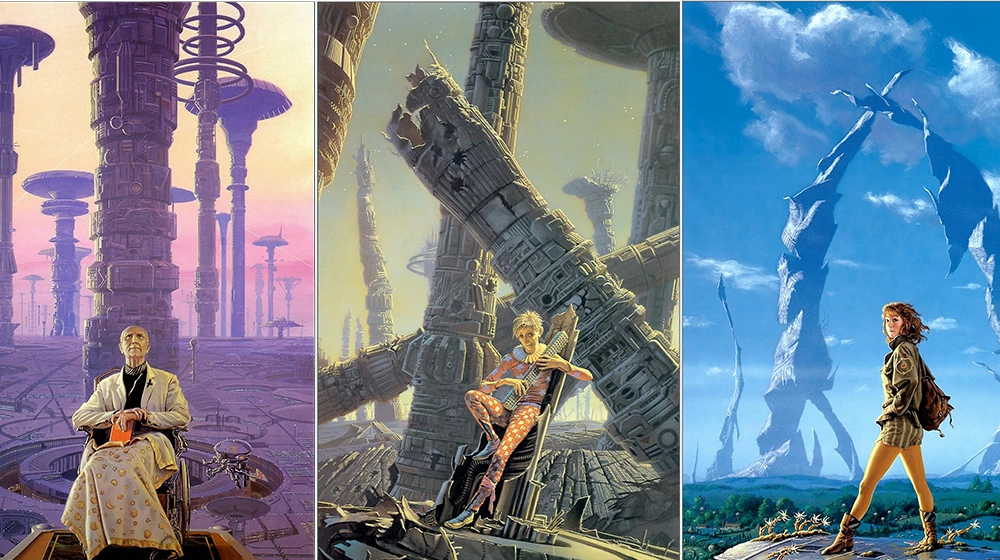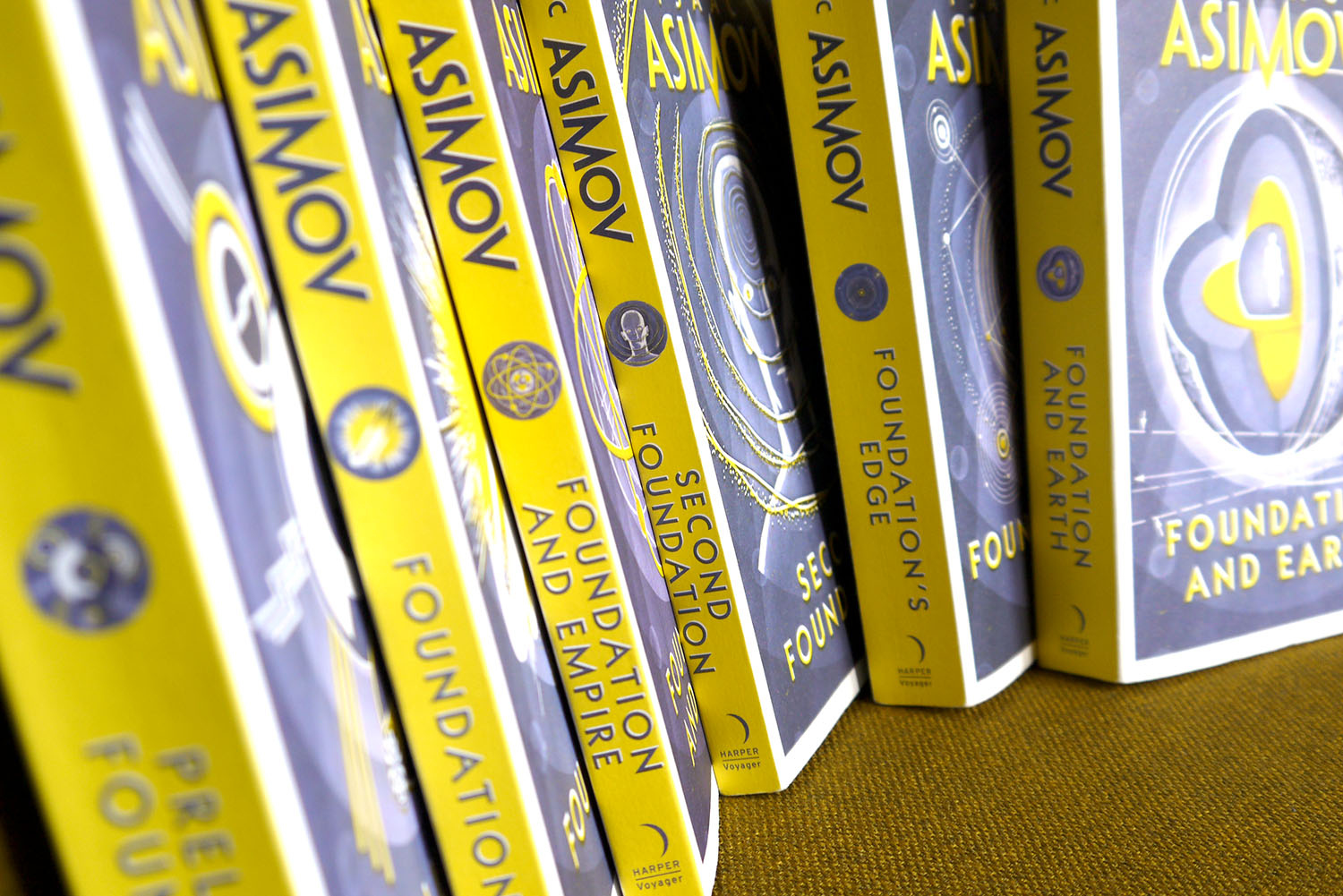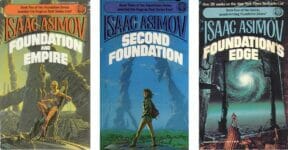The second book of the Foundation series, Forward the Foundation, part two of two in the prequel volumes, was chronologically published last in 1993. Several consequential revelations came to the surface in the previous book, Prelude to Foundation, such as the very existence of the supposedly long-lost mechanical entities “robots” and a confirmation that humans originated from a planet called Earth. In fact, it was a robot named Daneel Olivaw that encouraged Hari Seldon to develop his theory of psychohistory, a new field of science to predict the behavioral patterns of a large society and transform it into practical application to save humanity.

Eight years have passed since then. Forward the Foundation continues Seldon’s journey in his attempt to advance psychohistory. There has been genuine progress and he can now predict (with good accuracy) how the society will react to a particular stimulus. Based on a more elaborate calculation, Seldon comes up with a dangerous hypothesis that the Galactic Empire will meet its demise within a few hundred years. Furthermore, the fall of the empire will trigger a period of barbaric chaos all across the galaxy for 30,000 years because of a power vacuum.
Seldon has been working together with First Minister Eto Demerzel (known to Seldon as robot Daneel Olivaw) to develop psychohistory. They also have support from Yugo Amaryl, which turns out to be one of the greatest researchers in the study of psychohistory, second only to Seldon himself. The relationship with Demerzel helps propel Seldon into the high circle of the empire’s political ladder. Following the mysterious disappearance of Demerzel during official duty, Emperor Cleon appoints Seldon as the First Minister.
The Galactic Empire remains in safety with no meaningful challenges to the power; Trantor is in a decade of tranquillity. After spending 10 years as the First Minister, the early signs of Imperial collapse begin to surface. A coup attempt by a political faction ends up killing the emperor, resulting in a military junta for another decade of unease. Seldon steps down from his position as the First Minister. He also now understands that psychohistory predictions only apply to a large society but not to a single individual.
Now that Seldon is no longer in a position of power in the government, he shifts the focus back to the psychohistory project. With Amaryl and other researchers, Seldon advances the study to the where he crafts a course of action to shorten the barbaric era from 30,000 years to a mere thousand. It is a road map that bridges the interregnum between the collapse and the rise of the Galactic Empire. The blueprint is subsequently known as the “Seldon Plan.”
Psychohistory is almost completely transformed into practical science, and Seldon’s public life never looks brighter. His personal life, however, is dwindling with losses. His wife Dors Venabili is killed and his adopted son Raych moves to Santanni. He is later killed when Santanni rebels against the Galactic Empire. Raych’s wife and younger daughter escape on a starship, never to be seen again. Raych’s eldest daughter, Wanda, is the only one who remains with Seldon. Yugo Amaryl also dies in middle age.
Not only is Seldon’s personal life filled with tragedies, but his health is also deteriorating. With the Galactic Empire rapidly dwindling to barbarism, Seldon is more determined than ever to fully use psychohistory to alter the course of the galactic civilization. His plan will be key to survival during the post-Imperial era. Seldon gradually notices that Wanda is a “mentalic,” a person with a psychic ability to read people’s minds and influence them. She is able to find others like her, allowing Seldon to ensure the implementation of his plan. He goes as far as putting Wanda and her mentalic associates into seclusion, so they may execute the secret parts of Seldon Plan without interruption.
One of the most interesting aspects of the novel is the surprising transformation by Isaac Asimov from the typical third-person point of view into a first-person perspective when he recounts the death of Hari Seldon. It is the only part of the Foundation series that the author uses such a style. As far as the story and description go, the novel delivers fantastic imagery of Trantor and all the characters are well-detailed. By the end of the book, the Foundation as described in the original trilogy still does not exist yet, but the Seldon Plan is a done deal and all that’s left is how Seldon carries it out.
Have you read the prequel books of the Foundation series? Is the delivery of Seldon’s story fulfilling enough? We’d love to hear from you.
Other things you might want to know:
What is the proper reading order of the Foundation series?
It is pretty straightforward. Start with the prequel series (Prelude to Foundation and Forward the Foundation), followed by the trilogy (Foundation, Foundation and Empire, and Second Foundation), before finally closing the story with the sequel books (Foundation’s Edge and Foundation and Earth).
Does every book follow the same structure?
With the possible exception of Prelude to Foundation, all books in the series feature the same storytelling style. Asimov uses society itself instead of any individual characters as the main character, the protagonist, the most important subject of discussion in the plotline. Also like some other books in the series, the second prequel consists of four novellas with a short epilogue. Each novella is reasonably self-contained.
Are the characters in Forward the Foundation based on actual people?
Although it would be difficult to draw a direct comparison between any individual character and an actual figure, you can easily notice the inspirations behind some key players in the novel. For example, Dors Venabili is Janet (Asimov’s second wife), Wanda is Robyn (his daughter), and Seldon is Asimov himself.
Check out other articles by month:







